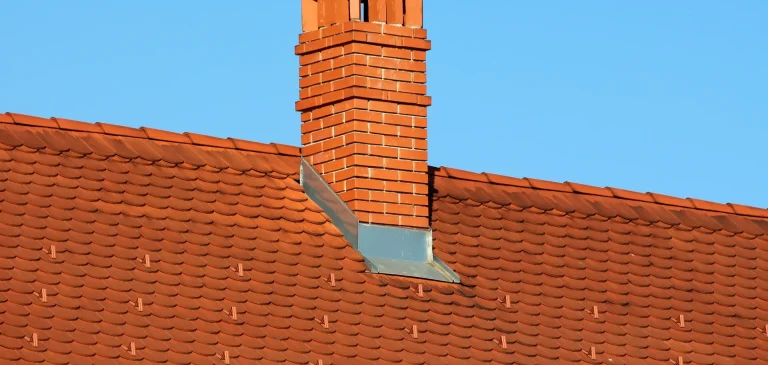Understanding Chimney Flashing and Its Critical Role
Chimney flashing serves as the essential waterproof barrier where your chimney meets the roof, preventing water intrusion that can lead to devastating structural damage. This specialized metal system creates multiple layers of protection, directing rainwater away from the vulnerable intersection where two different building materials meet. At Pinkman Roofing, we’ve seen firsthand how properly installed flashing can mean the difference between a dry, secure home and thousands of dollars in water damage repairs. The complexity of chimney flashing often surprises homeowners who assume it’s simply metal bent around the chimney base. In reality, effective flashing requires precise installation of step flashing along the sides, cricket or saddle flashing at the back, and apron flashing at the front. Each component must work in harmony with your roofing material, whether that’s asphalt shingles, slate, or tile. Our GAF Certified technicians understand these intricate relationships and ensure every flashing installation meets or exceeds industry standards throughout Worcester, MA and surrounding areas.
Common Flashing Problems We Encounter
During our inspections across Worcester, Shrewsbury, Holden, Auburn, Millbury, Leicester, & West Boylston, MA, we regularly discover flashing issues that homeowners might not notice until significant damage has already occurred. Seasonal temperature fluctuations cause metal to expand and contract, potentially creating gaps where water can penetrate. Additionally, the caulking and sealants used around flashing deteriorate over time, typically lasting only five to ten years before requiring replacement. Whether you need a complete roof replacement, emergency roof leak repair, or help with storm damage, our licensed and insured team brings over 20 years of hands-on experience to every job, allowing us to identify these subtle warning signs before they become major problems. Another frequent issue involves improper initial installation where contractors cut corners by using inadequate materials or skipping crucial steps like installing a cricket behind wider chimneys. We’ve encountered countless homes where previous contractors simply bent aluminum flashing against the chimney and sealed it with roofing cement, a temporary solution that invariably fails within a few years. Our approach involves removing old, deteriorated flashing completely and installing a comprehensive system using high-quality materials like copper or heavy-gauge aluminum that can withstand decades of weather exposure.
Our Professional Flashing Installation Process
When Pinkman Roofing undertakes a chimney flashing project, we begin with a thorough inspection to assess the chimney’s condition, the existing flashing system, and any underlying damage. This free inspection helps us develop a comprehensive plan tailored to your specific situation. We carefully remove the old flashing and inspect the chimney mortar, roof decking, and surrounding shingles for any signs of water damage or deterioration that must be addressed before new flashing installation. Our installation process involves cutting and shaping each piece of step flashing to fit precisely against your chimney’s dimensions. We install these pieces in a shingle-like pattern, ensuring each overlaps the one below it to create a watertight cascade effect. The base flashing gets secured directly to the roof deck, while counter flashing is embedded into mortar joints we’ve carefully ground out and cleaned. This two-part system allows for natural movement between the roof and chimney without compromising the water barrier.
Material Selection and Long-Term Performance
The choice of flashing material significantly impacts both performance and longevity. We typically recommend and install:
- Copper flashing: offers exceptional durability lasting 70+ years with minimal maintenance while developing an attractive patina
- Aluminum flashing: provides excellent cost-effectiveness and corrosion resistance suitable for most residential applications
- Galvanized steel: delivers robust performance at a moderate price point though requires periodic inspection for rust
Each material has specific advantages depending on your roof type, local climate conditions, and budget considerations. Our 5 Star Google Rating reflects our commitment to helping customers make informed decisions about materials that will protect their investment for decades to come.
Maintenance and Prevention Strategies
Regular maintenance extends flashing lifespan significantly and prevents costly water damage. We recommend annual visual inspections, particularly after severe weather events. Look for lifted edges, rust spots, missing caulk, or gaps between flashing and chimney surfaces. Small cracks in caulking might seem insignificant, but water infiltration through these tiny openings can rot roof decking, damage insulation, and create ideal conditions for mold growth. Professional maintenance involves resealing joints, replacing damaged sections, and ensuring proper water flow patterns remain intact. Our preventive approach has saved countless homeowners from extensive repairs by catching problems early when solutions remain simple and affordable.


